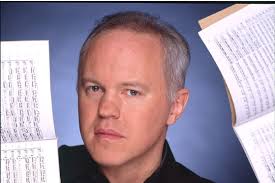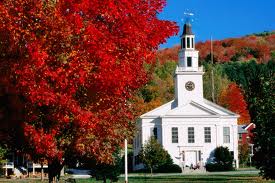Good posture is essential for tone production, ease of playing and injury prevention. We’re all built slightly differently and there is no “one right way” to play the violin. However, these six steps are worth keeping in mind as a checklist for optimal playing:
[typography font=”Cantarell” size=”28″ size_format=”px”]1. Fix Right Foot First[/typography]
Start with your heels together and your feet in a “V” shape. Pick up your right foot and step to the side and slightly back. Your feet should be shoulder width apart. Move only your right foot, allowing your left foot to become a guide for the angle of the violin. Dr. Suzuki asked students to put slightly more weight on the left foot to keep the body straight. For young beginners it is helpful to trace an outline of the feet on poster board. This allows students to quickly find “rest position” and “playing position”. Beginners should always play standing. Later, when good posture is ingrained it is possible to transfer to a sitting position for orchestra and chamber music.
[typography font=”Cantarell” size=”28″ size_format=”px”]2. Chin Power[/typography]
Keeping your body straight, look straight ahead and then turn your head slowly like a robot until your nose is lined up with your left foot. Then drop your chin, keeping your head straight or slightly tipped to the left. Try the same sequence with the violin. Get used to holding the violin only with your chin. Young students can place their left hand on their right shoulder, allowing the arm to hang. This ensures that the left shoulder remains free of tension and does not raise. It’s important to stay relaxed, allowing the violin to adjust to your posture, not the other way around. Keeping your spine straight, lean slightly into your lower back to bring the violin up. The violin rising to meet the bow helps contact with the string. Young beginners enjoy balancing a marble on the strings to show that the violin is not drooping.
[typography font=”Cantarell” size=”28″ size_format=”px”]3. Nose, Fingerboard, Elbow, Left Foot[/typography]
When chin power is fully established, bring up the left hand. The nose, fingerboard, left elbow and left foot should all line up. Students who have difficulty drawing a straight bow in line with the bridge should make sure that the violin is not positioned to the left of the left foot. Bringing the violin in often fixes this problem immediately. Your elbow will gently swing further under to position your hand for the D and G strings and release back for the E string.
[typography font=”Cantarell” size=”28″ size_format=”px”]4. The Left Hand[/typography]
Gently hold a racquetball in your left hand with your palm dropping. Take the ball out, maintaining the same shape. This is the correct shape of the hand for violin playing. When the left hand moves up to the fingerboard, first find the thumb, marking first position. The thumb should be vertical. For larger hands the thumb will lean back slightly towards the scroll. Allow the base of the first finger to rest on the other side of the violin’s neck. Keep the palm dropped. Gently turn your wrist to allow the fingers to form a relaxed roof over the fingerboard. Establish a soft, relaxed feeling in the hand and fingers while your arm is at your side and then keep this feeling as the arm is brought up into place. Never squeeze the violin’s neck. If your hand feels tight shake out and renew a feeling of relaxation. Relaxed fingers will naturally drop with the fingertips close over the strings. Fingers should drop on their tips with just enough relaxed weight to keep the string down. They should never press into the fingerboard. If the wrist is slightly turned, you’ll notice that the fingertips contact the string at a slight diagonal angle. The first joint of the finger should stay over the sting, only slightly behind the finger tip.
[typography font=”Cantarell” size=”28″ size_format=”px”]5. The Bow Hold[/typography]
Loosely drop your right hand from your wrist and notice how the fingers naturally curve. This is how the bow hold should feel. The beginner can practice picking up a pencil with only the curved thumb and the second finger. This lineup should mark the center of the hand for balancing the bow. Start with your hand held out with the palm facing you. Bring the bow in, lining up with the base of your fingers. Make sure the thumb curves and pushes into the bow with a slight firmness. The thumb and second finger should form a ring, although they don’t need to touch. The third finger curves around the bow, the pinky curves on top and the first finger rests between the first and second joint. The bow should always be held loosely and never squeezed. Maintain a springy feeling in the fingers.
[typography font=”Cantarell” size=”28″ size_format=”px”]6. The Right Arm[/typography]
The right arm should also feel relaxed and springy. Relaxed weight transfers from the shoulder through the elbow into a loose wrist and hand and into the string. Feel the connection of the hair and the string. Make sure the wrist is released as if you’re playing with a yo-yo and allow your elbow to settle and relax. String crossings should come from the hand with the elbow only following. When playing with more bow, the elbow and upper arm will push and pull the hand and the wrist will freely move like a paintbrush, rising at the frog and lowering as the bow is drawn to the tip to adjust the weight.
[typography font=”Cantarell” size=”28″ size_format=”px”]Building Good Habits[/typography]
Beginners will build a great foundation by focusing on one element at a time and creating good habits through correct repetition. If you’re a more advanced student and you face technical difficulty in any area of violin playing, attention to one or more of these posture points might lead to greater ease as a violinist.



 In the virtual isolation of early twentieth century New England, an organist and insurance salesman named Charles Ives (1874-1954) was imagining shocking and innovative new music. Ives created atmospheric collages of sound. He poured fragments of American folk songs and other material into a musical melting pot to create an exciting cacophony. Much of his music became widely known only decades later when other composers embraced similar techniques.
In the virtual isolation of early twentieth century New England, an organist and insurance salesman named Charles Ives (1874-1954) was imagining shocking and innovative new music. Ives created atmospheric collages of sound. He poured fragments of American folk songs and other material into a musical melting pot to create an exciting cacophony. Much of his music became widely known only decades later when other composers embraced similar techniques. Today is the 100th birthday of twentieth century English composer Benjamin Britten (1913-1976). Let’s celebrate by listening to Britten’s Four Sea Interludes from the opera, Peter Grimes. Played during scene changes, these interludes express the drama of the opera’s unsettling story. As you listen, consider the mood that Britten evokes and pay attention to the orchestration. You can read the synopsis of the entire opera
Today is the 100th birthday of twentieth century English composer Benjamin Britten (1913-1976). Let’s celebrate by listening to Britten’s Four Sea Interludes from the opera, Peter Grimes. Played during scene changes, these interludes express the drama of the opera’s unsettling story. As you listen, consider the mood that Britten evokes and pay attention to the orchestration. You can read the synopsis of the entire opera  Timing is an important element in music as well as comedy. A great comedian knows how to build up to the punch line of a joke . Similarly, great composers have an intuitive understanding of proportion in music. They know how long to repeat an idea before moving on. They allow the music to unfold organically in a way that seems “right”, as if the piece is composing itself.
Timing is an important element in music as well as comedy. A great comedian knows how to build up to the punch line of a joke . Similarly, great composers have an intuitive understanding of proportion in music. They know how long to repeat an idea before moving on. They allow the music to unfold organically in a way that seems “right”, as if the piece is composing itself.